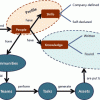Strategic advice to leverage new technologies
Technology is at the heart of nearly every enterprise, enabling new business models and strategies, and serving as the catalyst to industry convergence. Leveraging the right technology can improve business outcomes, providing intelligence and insights that help you make more informed and accurate decisions. From finding patterns in data through data science, to curating relevant insights with data analytics, to the predictive abilities and innumerable applications of AI, to solving challenging business problems with ML, NLP, and knowledge graphs, technology has brought decision-making to a more intelligent level. Keep pace with the technology trends, opportunities, applications, and real-world use cases that will move your organization closer to its transformation and business goals.
Recently Published
The Japanese government considers some practitioners so skilled and talented that they are subsidized and honored as "living national treasures." The US government and its Department of Defense consider the current domestic science and technical human capital pipeline a national security issue. Ensuring that critical skills endure has leaped onto the agenda of national policy makers and senior business decision makers.
Virtual Desktops Come of Age
Server virtualization has made considerable headway in the enterprise. But the use of virtualization for desktop (client) computing has been rather limited. This has been primarily attributed to technical issues that have made for a poor end-user experience and difficulties in managing and scaling virtual desktop infrastructure environments.
Starting Agile Adoption: Part I -- Quality Assurance
Agile software development -- developing an application in small increments, where stakeholders can review the results and reevaluate goals after each time-boxed iteration -- is simple and powerful. However, implementing the practices that enable agile software development can be difficult because adopting an agile approach requires change across the organization. This three-part Executive Update series will discuss how best to start the agile adoption process.
Beware the Silver Bullets
Earlier this year, I discussed an apparent growing interest by organizations in using data mining and predictive analytics ("How Do Your Data Mining and Predictive Analytics Grow?" 23 February 2010). I noted that several developments account for this trend.
It's Not (Just) What You Know; It's Who You Know
The mantra "It's not what you know, but who you know" has uncertain origins. Two early attested references are from 1914 and 1918, in the context of US labor relations. For the following 90 years, the phrase was mostly used in politics and in business -- and in the world of lobbyists, which is the intersection of the two.
Five Steps to Implementing MDM
In my recent Advisor ("How to Make MDM Go: Start with Architecture,"), I discussed the role of enterprise information architecture in Master Data Management (MDM). In this Advisor, I look at the steps to implementing MDM once you have your information architecture in place.








